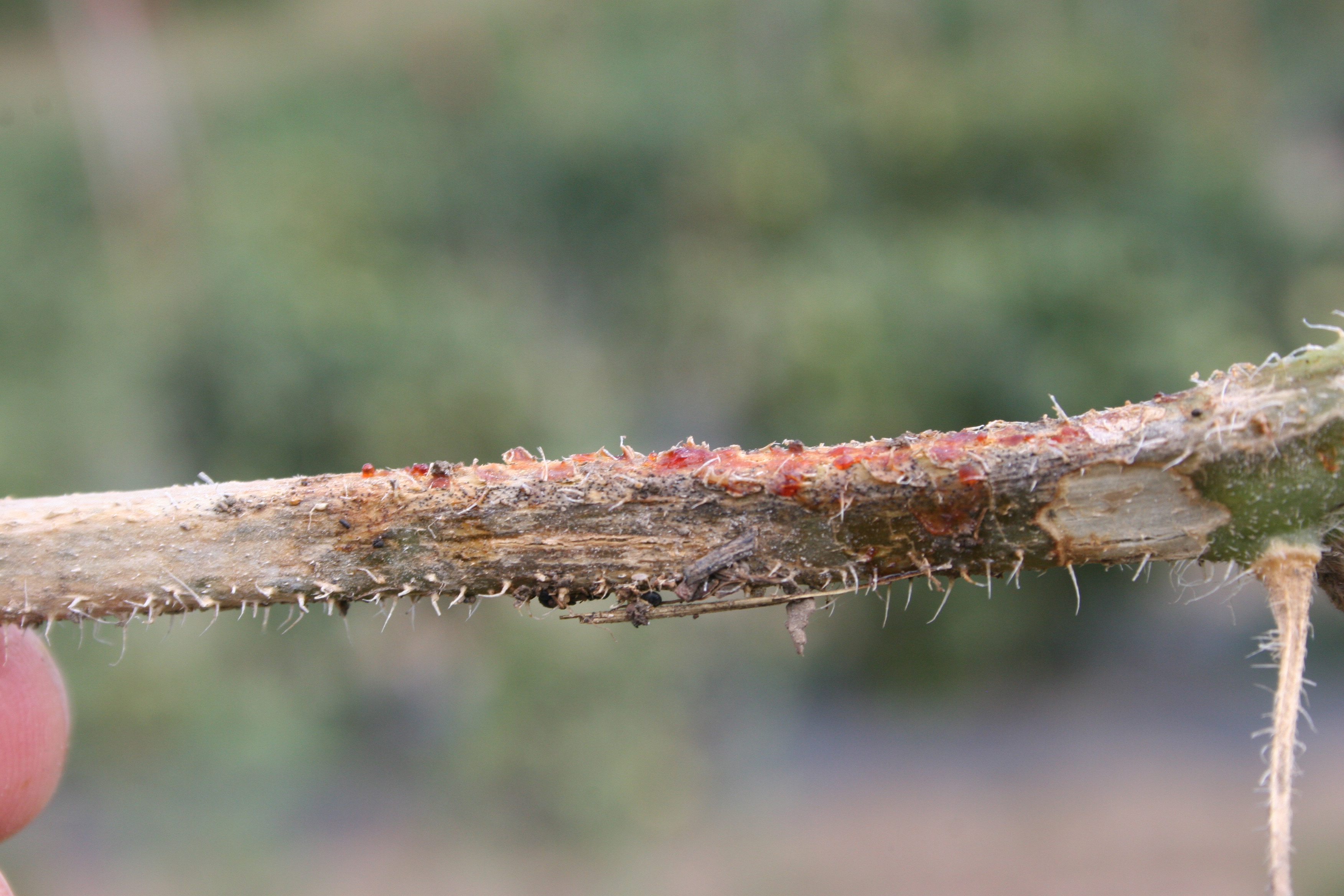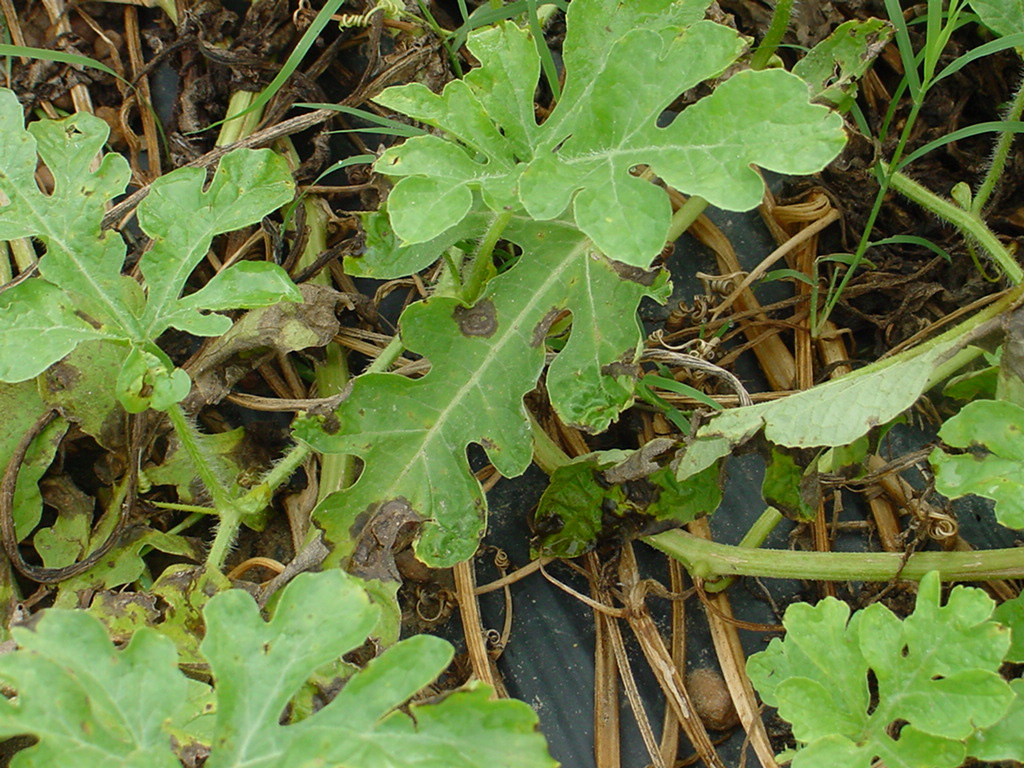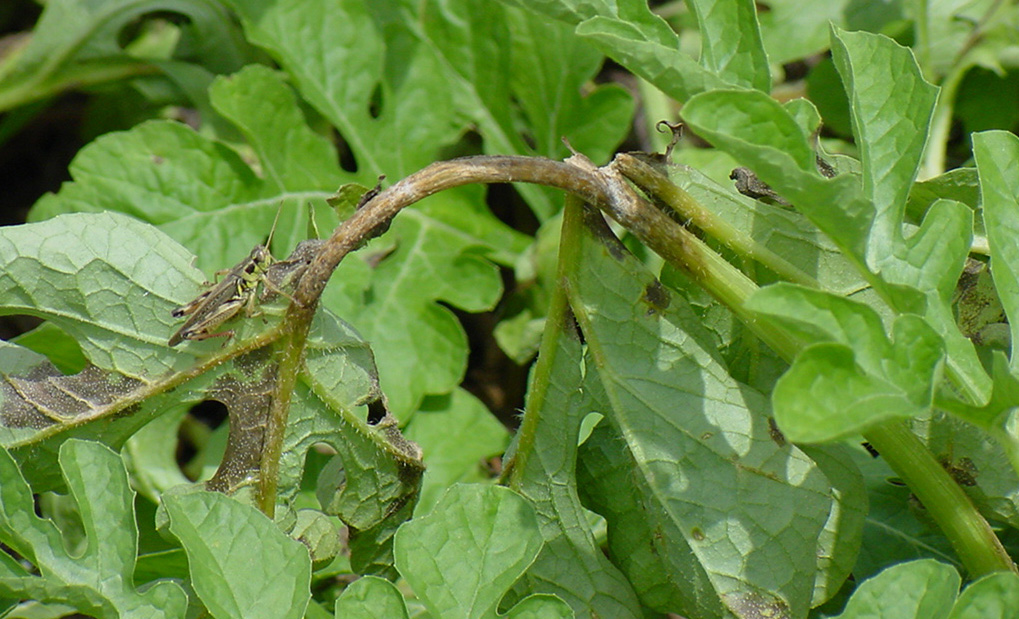Gummy Stem Blight/Black Rot of Cucurbit Crops
Return to Diseases
Gummy stem blight/Black rot (Didymella bryoniae) affects most cucurbits, although it is less common on squash. This disease can occur on all plant parts—leaves, stems, and fruit (black rot). Lesions on leaves are circular and tan to brown in color and can expand quickly. Affected Leaf veins appear water soaked and orange-brown in color. Lesions on stems and vines are water soaked initially, orange-brown in color, and may exhibit a gummy, amber-colored exudate. Older lesions tend to form tan-colored cankers. Lesions on fruit begin as small, water-soaked spots that later expand and may exude a gummy ooze. Lesions on all plant parts will contain numerous, tiny black fruiting bodies (pycnidia).

Gummy stem blight exudate on muskmelon vine.
(Photo: Kenny Seebold, University of Kentucky)

Gummy stem blight symptoms on watermelon fruit.
(Photo: Kenny Seebold, University of Kentucky)

Gummy stem blight symptoms on foliage.
(Photo: Kenny Seebold, University of Kentucky)

Gummy stem blight symptoms on vine.
(Photo: Kenny Seebold, University of Kentucky)
Gummy stem blight in field.
(Photo: Kenny Seebold, University of Kentucky)
Management:
- Space plants for air circulation and rapid drying.
- Use physical barriers (mulches) to prevent fruit from contacting soil.
- Apply protectant fungicides.
- Prevent wounds by cucumber beetles (see #14), powdery mildew (see #38), and other diseases and pests.
- Promptly remove and destroy diseased plant material during the growing season.
- Manage weeds and potential alternative hosts.
- Avoid movement of infested soil to clean fields.
- Promptly destroy crop residues after harvest.
- Deep plow to bury residual inoculum.
- Rotate with nonhost crops for at least 3 years.
